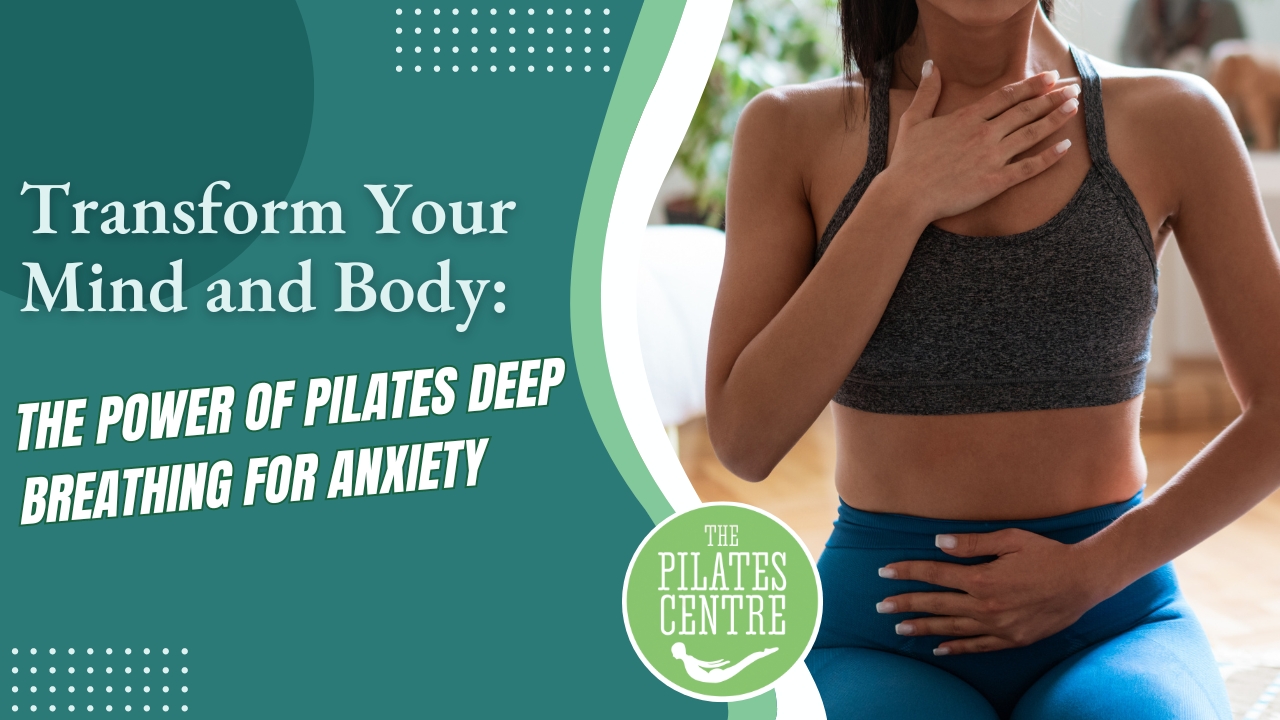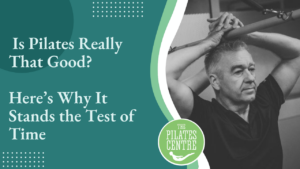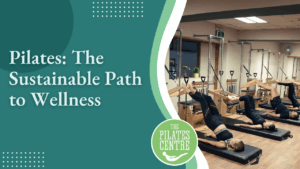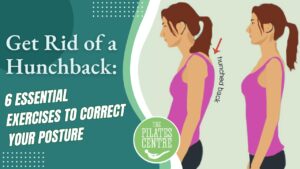Introduction
Breathing is an essential function that impacts every aspect of our health, yet it often goes unnoticed. Ancient cultures revered deep nasal breathing for its health benefits, and modern wellness practices are beginning to embrace these techniques. At the core of the Pilates method, deep breathing is not just a routine—it’s a pathway to reducing anxiety and enhancing your Pilates practice.

The Health Benefits of Deep Breathing Exercises
Deep breathing in Pilates isn’t just about oxygenating your blood and preparing your muscles for safe exercise; it also has significant health benefits:
- Stress and Anxiety Reduction: Modern research supports the stress-relieving benefits of proper oxygenation. Deep breathing induces a state of relaxation, making it a powerful tool for managing anxiety.
- Enhanced Blood Oxygenation: Properly oxygenated blood boosts your energy levels and promotes a positive mindset.
- Decreased Muscle Tension: Deep breathing alleviates tension throughout your musculoskeletal system, reducing the risk of exercise-related injuries.
- Improved Lymphatic System Efficiency: It enhances the efficiency of the lymphatic system, aiding in the removal of toxins from the body.
- Filtered and Warmed Air: Nasal inhalation prepares the air for your lungs, a practice endorsed by many ancient health traditions.
Understanding Pilates Lateral Breathing

Pilates lateral breathing is a cornerstone of the Pilates method, designed to maximize oxygenation while minimizing stress. This technique can also enhance your lung capacity, allowing for more effective oxygenation with each breath.
How to Practice Pilates Lateral Breathing
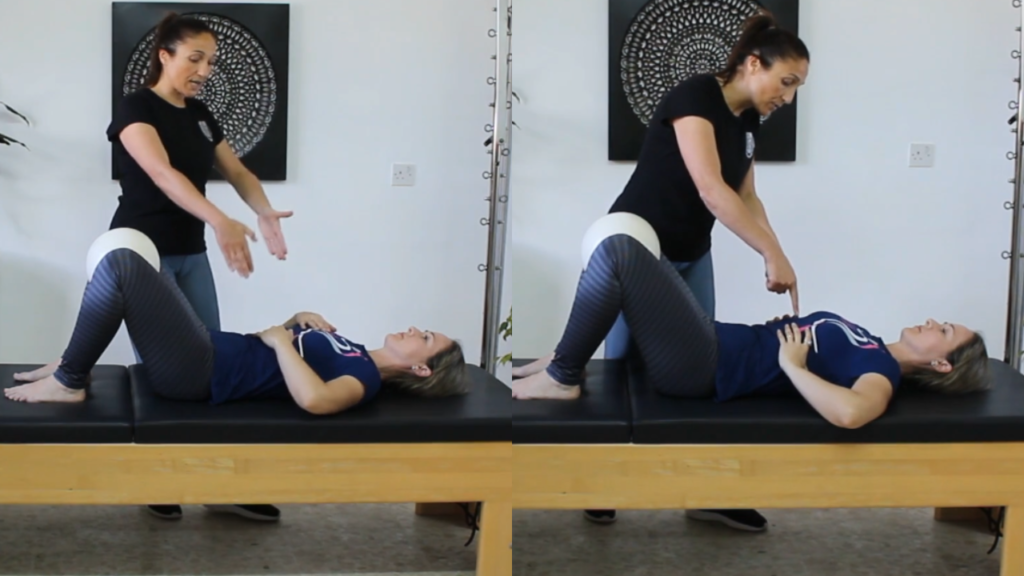
Engaging in Pilates deep breathing is straightforward and can be done outside of the studio to manage stress and anxiety:
- Position Your Hands Below Your Rib Cage: Sit comfortably on the floor and place your hands beneath each side of your rib cage. As you inhale, feel your rib cage expand and get accustomed to this sensation.
- Inhale Deeply Through Your Nose: Take a deep breath in through your nose. Avoid forcing your lungs beyond their capacity, and explore your current lung volume limits. Feel your rib cage expand with the intake of air.
- Exhale Fully Through Your Mouth: Gently exhale through your mouth until your lungs are empty. Avoid forceful expulsion; instead, let the air leave your lungs slowly and feel your rib cage contract.
- Repeat: Continue this breathing pattern, allowing each breath to become easier as your rib cage expands and contracts naturally.
Practicing Pilates Breathing Safely
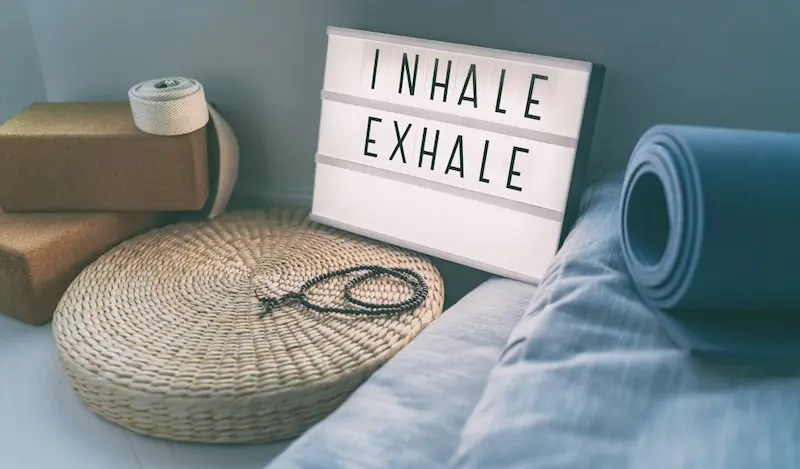
While everyday breathing should involve the diaphragm, lateral breathing expands the rib cage, making it ideal for enhancing lung capacity when practiced occasionally. Always avoid shallow, rapid chest breaths, as these can decrease blood oxygen levels and increase heart rate, exacerbating stress and anxiety. Deep, deliberate nasal inhalation can counteract these negative effects, promoting calm and relaxation.
Conclusion
Incorporating deep breathing exercises into your Pilates practice can profoundly impact your mental and physical well-being. By mastering Pilates lateral breathing, you can enhance your lung capacity, reduce stress, and elevate your overall health. Ready to experience the benefits of Pilates deep breathing? Contact us to try a class at the Pilates Centre.
📧 Email: info@pilatescentre.es
📞 Call: +34 610 30 60 05

John McCallum
is an esteemed, Fully Certified Comprehensive Classical Pilates Teacher and takes immense pride as the proprietor of the distinguished Pilates Centre located in Jalon, Spain. His remarkable journey in the realm of Pilates commenced back in 2006, a pivotal juncture when he confronted the diagnosis of three slipped discs in his lower back. Pilates emerged as a beacon of profound hope and rejuvenation in his life. Instead of succumbing to the prospect of surgical intervention, Pilates gracefully assumed the role of his lifeline.
This transformative experience impelled him to make a resolute decision that would reshape his life’s trajectory. Following his journey to become a Pilates Teacher, he passionately extended the benefits he had personally garnered to those in need. This also took him to travel to other countries to continue to learn and have a fuller understanding of the method.

